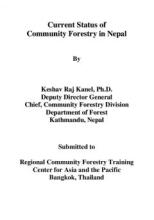/ library resources
Showing items 1 through 9 of 11.In The National Forest Plan of 1977, the poor and mountainous kingdom of Nepal recognized the need for the people’s participation in managing its forests.
RECOFTC conducted a review of the linkages between community forestry and poverty, with an emphasis on Asia. The analysis shows that clear empirical evidence exists, demonstrating that community forestry has provided tangible benefits to poor people.
In search of excellence deviates from the path that most authors have taken. Instead of dwelling on the failures and the negative, it celebrates the “good” and the many positive management efforts in the Asia–Pacific region.
Assesses the process of rural land registration in Mozambique and the outcomes for poor and marginalised groups.
Ratanakiri is divided into 9 districts covering 240 villages and approximately 100,000 people. Of these,
An assessment of community level forest conflict in Cambodia. It was conducted as part of a project to understand the types, causes, and impacts of conflicts over forest resources at the community level in selected Asian countries and to assess methods to avoid, reduce, and monitor conflicts.
Community based forestry has the potential to contribute much more to achieving sustainable development and poverty reduction than is the case today.
The Communal Land Associations in Community Forests of Budongo Sub-county are the first pilots in Uganda, and are still in the process of formation.
This document is intended for those interested in gathering natural resource information that reflects the needs of local communities.
Paginering
Land Library Search
Through our robust search engine, you can search for any item of the over 73,000 highly curated resources in the Land Library.
If you would like to find an overview of what is possible, feel free to peruse the Search Guide.







